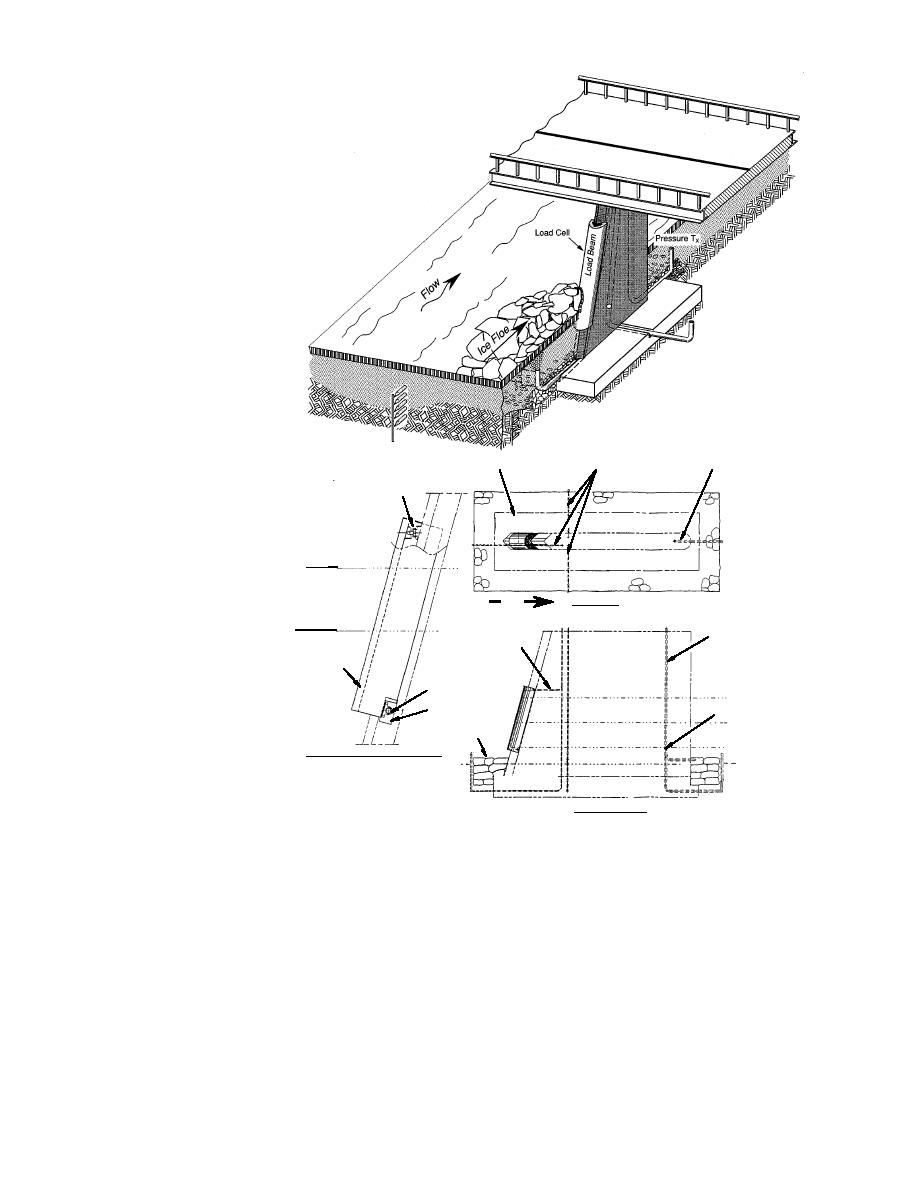
low the low-water level.
The top of the beam is sup-
ported by a 200-kip strain-
gage load cell located on
the centerline of the pier.
The load cell is designed
to be insensitive to bend-
ing moments less than
200,000 in.-lb. For redun-
dancy there are two 350-
ohm Wheatstone bridge
circuits in the load cell. For
practical purposes the
three-point support can be
considered as a simply
a. Sketch.
supported beam. Ice forces
are calculated using the
measured upper reaction
and the corresponding mo-
ment arm, i.e., the differ-
ence between the water
elevation and the elevation
6 in. Dia Stilling Well
Trunnion Pivot Location
3 in. Dia PVC Conduits
of the beam's bottom sup-
Load Cell
port pin. Water elevation
Stone Fill
is measured using a pres-
Footing
sure transducer in a still-
Pier
ing well in the downstream
Elevation 340
end of the bridge pier. The
25 Year High Water
pressure transducer has a
Flow
PLAN VIEW
0- to 200-in. range with a
corresponding 4- to 20-mA
Elevation 334
Stilling Well 6 in. Dia
5 Year High Water
3 in. Dia
output.
PVC Conduits
A frequent shortcoming Load beam
of most ice-force field mea-
Trunnion Bearing
25 Year High Water
suring installations is that
Trunnion Flange
there is no simultaneous,
Pressure Transducer
5 Year High Water
continuous measurement
Stone Fill
Low Water
of ice thickness. Ice thick-
SECTION THROUGH LOAD BEAM
Elevation 324
ness is required to convert
Approx. Sediment Level
the total or global load to
an ice pressure. Using units
ELEVATION VIEW
of pressure allows com-
b. Schematic.
parisons with other force
measurements, and ice
Figure 8. Instrumented pier on the Bridge Street bridge.
thickness can be used as a
design criterion. Typically, ice thicknesses are ob-
during the ice run is of even greater importance.
tained by measuring the ice prior to breakup or
The technique proposed is to locate the bottom
measuring the thickness of floes on the side of
ice surface by using an underwater, up-looking,
the channel following the ice run. Neither ap-
sonar transducer and to locate the top surface
proach provides the accuracy required to calcu-
with a downward-looking ultrasonic transducer.
late the effective ice pressure. Since the bulk of
The problem is to place the underwater sonar
the ice impacting the White River bridge pier
transducer where it will be protected from debris
will probably be associated with ice jams with
and yet be able to locate the bottom ice surface
thickness variations, measuring the ice thickness
just before the ice collides with the load beam.
6



 Previous Page
Previous Page
